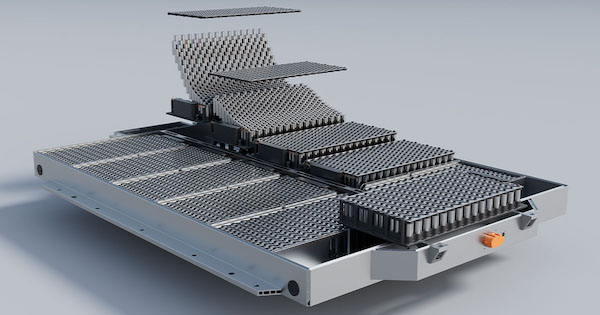
The consortium will apply Altair’s C123 three-stage rapid exploration process as part of its EV design process research. Image Courtesy of Altair
Latest News
January 23, 2024
As global markets race to towards electrification, a three-company consortium has been charged with researching and developing a new design process for electric vehicles.
Anchored by luxury car icon Jaguar Land Rover (JLR), battery manufacturer Danecca, and computational and AI software provider Altair, the consortium’s research project has been awarded funding from the U.K. government through the Faraday Battery Challenge. The funding for this latest project hails from UK Research and Innovation, a non-departmental public body tasked with supporting battery technology development in the United Kingdom.
The Faraday Battery Challenge, backed by 541 million euros in funding, invites research entities and the private sector to develop high-performing, cost effective battery technologies while also cultivating a thriving battery industry in the U.K. So far, the entity has backed projects aimed at improving battery lifespan, battery range, charging rates, and reuse and recycling at battery end of life.
For their initiative, JLR, Danecca, and Altair will leverage each other strengths to improve design processes for next-generation electric vehicles. Their proposed process will leverage Altair’s computational simulation software to develop new vehicle prototypes that feature lighter bodies, allowing more room and flexibility for batteries without the additional weight, officials said. Altair’s OptiStruct, the FEA solver that’s part of the HyperWorks design and simulation platform, will be enlisted to perform optimization studies and specifically to take advantage of the software’s newly-developed electrothermal features.
JLR will also apply Altair’s C123 process, which is a three-stage concept development process for body-in-white structures aimed at delivering greater design freedom and experimentation for different packaging, manufacturing, and structural strategies. Aitair’s unique approach is intended to address some of the limitations of traditional simulation for this process.
According to Altair, “every stage deploys optimization technology, providing designers with structural data relating to the mass and attribute performance consequences of various design decisions and facilitating target ‘trade-offs.” Throughout the C123 process, the simulation technology is matched against the maturity of the available design data to ensure it's a “collaborative partner” in the design process. The process is supported by a custom toolbox built off of Altair HyperWorks and is independent of vehicle architecture, manufacturing process, and materials, officials said.
“Altair’s simulation and data analytics tools will enable the consortium to develop a new design process of electric vehicles and batteries, which will help make these vehicles lighter and more energy efficient,” said Royston Jones, Altair’s senior vice president of automotive.
The project runs through January 31, 2025, and all research results will stay with the consortium partners and can be used by other customers or projects.
Learn more about the U.K.’s Faraday Battery Challenge from this video.
More Altair Coverage
Subscribe to our FREE magazine, FREE email newsletters or both!
Latest News
About the Author
Beth Stackpole is a contributing editor to Digital Engineering. Send e-mail about this article to [email protected].
Follow DE




